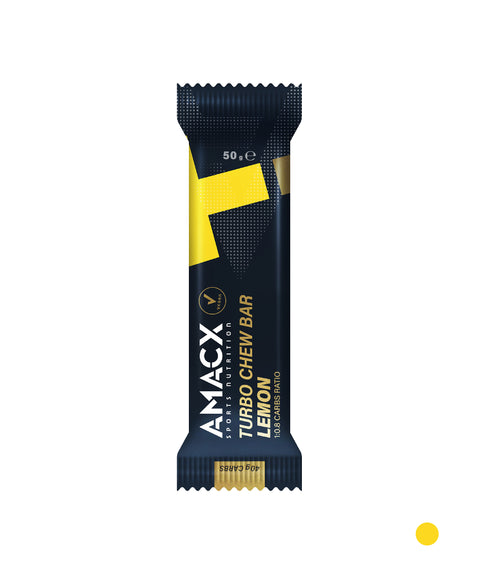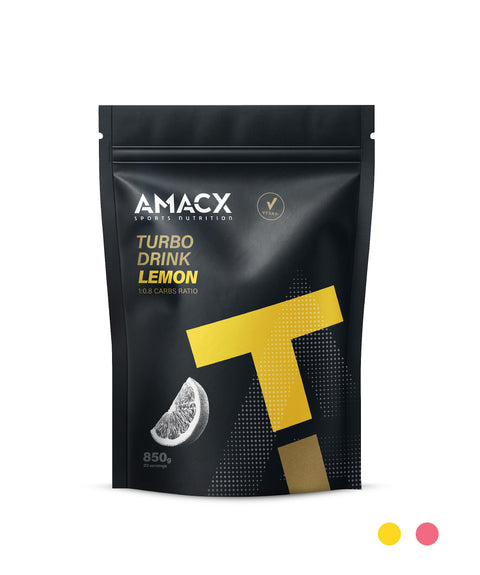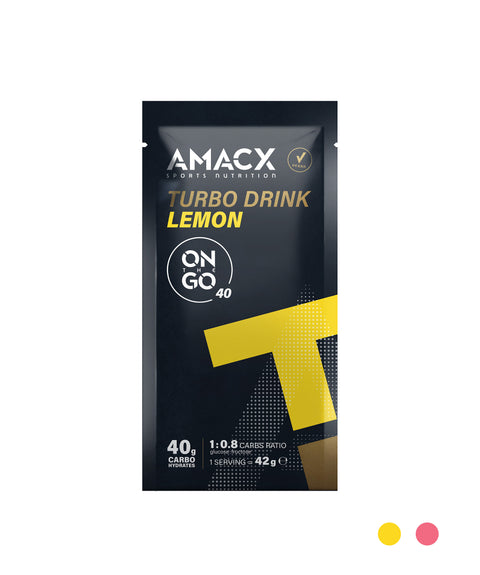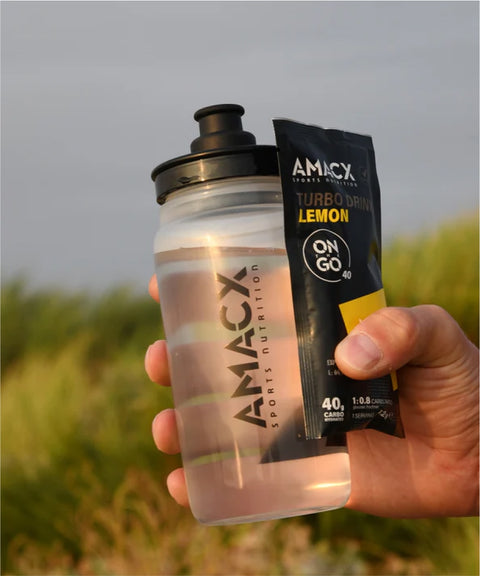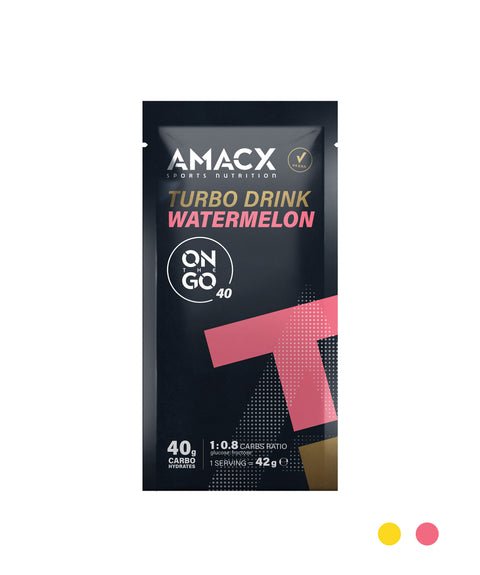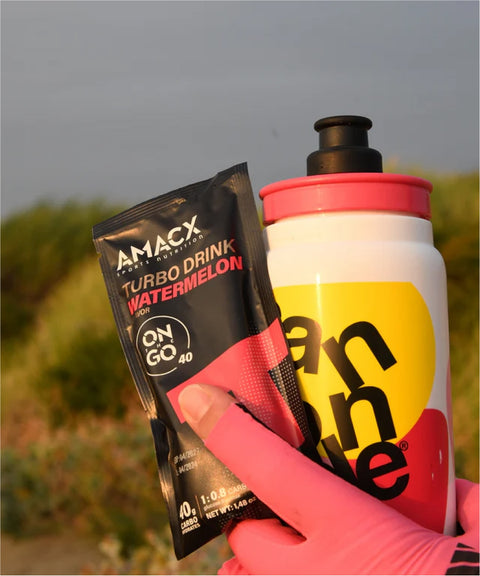Written by: Martijn Redegeld
The importance of higher carbohydrate intake during endurance sports
In a previous blog, you were able to read how many carbohydrates you would need per hour during your training or competition. Intakes of up to approximately 90 grams per hour have long been common during long and intensive efforts, but recently more endurance athletes seem to be striving for even higher carbohydrate intakes. A combination of old and new scientific findings confirm that it is possible to take in this extremely high amount of carbohydrates without suffering from stomach or intestinal complaints. You can read how to do this and when this benefit can be realised in this blog.
In summary:
- A carbohydrate intake of 120 grams per hour can offer significant benefits in performance and recovery under certain conditions (long/strenuous exercise, possibly lasting several days).
- If you are aiming for this high carbohydrate intake, make sure you choose products with a glucose-fructose ratio of 1:0.8, which you will find in the Amacx Turbo Line.
- In addition, it is crucial to ensure that your stomach and intestines are well trained to absorb these very high carbohydrate intakes during exercise, in order to prevent complaints.
The role of the right carbohydrate combination for higher absorption
There is one limiting step in the entire process of digesting and absorbing carbohydrates, transporting them through the body and actually using them to produce energy. This is the absorption of carbohydrates in the intestines. For a long time it was thought that this was limited to about 60 grams per hour because the absorption of glucose in the intestines is limited to around that amount. However, various scientific studies in the 1990s showed that the right combination of carbohydrates (glucose:fructose ratio of 2:1) enabled absorption of up to at least 90 grams per hour. By using this combination of different carbohydrates, two absorption systems in the intestines are utilised, which can significantly increase intake without causing stomach or intestinal complaints. Products from the Amacx Energy Line contain this ratio.
Extremely high carbohydrate intakes of up to 120 grams per hour lead to improved endurance performance and better recovery.
More recently, individual endurance athletes have reported intakes of up to well over 90 grams per hour, often accompanied by impressive performances during extreme endurance efforts (such as an Ironman or multi-day running or cycling competition). Where this was previously considered impossible, recent scientific studies show the opposite. In these studies, groups of cyclists and runners tolerated carbohydrate intakes of up to 120 grams per hour without any stomach or intestinal complaints. Not much later, it was also found that these high carbohydrate intakes also lead to higher oxidation, which means that this fuel is actually used in the body as extra energy. This would subsequently improve endurance performance, make you feel better when walking or cycling and contribute to better recovery.
For whom are extremely high carbohydrate intakes suitable?
This obviously sounds fantastic for every professional athlete, but also for many ambitious recreational athletes. However, before we start consuming large quantities of energy drinks, bars or gels during every training session, it is important to consider the specific circumstances in which these products offer added value, as well as which products are needed to achieve this in these situations.
Extremely high carbohydrate intakes with added value
Firstly, these high intakes will only offer added value during extremely long and/or intense efforts, where the recovery time may also be short (such as during a multi-day event). Think of ultra runs, a Granfondo (such as the Amstel Gold, Marmotte or Trois Ballons) or a multi-day running or cycling event in the mountains. During these types of events, the body's energy requirements are so high and large amounts of carbohydrates are burned hour after hour. This increases the risk of completely depleting the body's stores and thus getting the well-known ‘bonking’. Intakes of up to 120 grams per hour could delay the complete depletion of these body's own stores for as long as possible. However, if your training or competition is not of such a high duration or intensity, a lower carbohydrate intake (for example 60 to 90 grams per hour) will suffice.
How to choose the right products for high carbohydrate intakes
Secondly, if you want to aim for intakes above 90 grams per hour, make sure you choose the right products. Recent studies show that the relative proportion of fructose in the carbohydrate mixture must be increased to enable absorption in the intestine. A ratio of glucose to fructose of 1:0.8 seems to be the most ideal for optimising the system that absorbs glucose and fructose. Products from the Amacx Turbo Line are an ideal choice for this. These products also contain 40 or 80 grams of carbohydrates, which makes it very easy to reach 120 grams per hour. If you choose products with a different carbohydrate ratio (e.g. 2:1), then some of the carbohydrates will not be absorbed. This can possibly lead to stomach or intestinal complaints, such as nausea, bloating or diarrhoea.
Stomach and intestinal training for processing very high carbohydrate intake
Finally, the body, particularly the gastrointestinal system, must be trained to process these very high intakes. Like your physical condition, the gastrointestinal system is also highly trainable. You will need to gradually increase your carbohydrate intake over a longer period of time to increase the tolerance of the gastrointestinal system.




